So Long, Sajeev: The Piston Makes Its Last Slap
After a decade-plus of being TTAC’s foremost expert in Panther-bodied Fords, as well as the go-to Texan for any of your questions about OBD II or old-car designs, Sajeev is moving on.
He’s found a full-time home with another outlet, and we wish him well. He’ll be missed.
From Spring Break to an Endless Summer?
I was once a disillusioned grad student, endlessly unhappy with my prospects and with a simmering anger within my soul.
I previously ranted for Blue Oval News, after that outlet beat Ford in court. But when that gig ran its course and grad school had me over a barrel, I found TTAC’s august founder and made a modest proposal: let me review something that deserves a fresh perspective over Spring Break and I’ll give you 800 words on it.
No matter, things improved over the course of almost fourteen years, to the point I must now say goodbye to my beloved home.
Piston Slap: Henry's Spark Plug Menorah?
TTAC’s own Ronnie Schreiber writes:
Sajeev,
How many spark plugs do you think a Model T “trembler” ignition coil can fire simultaneously?
I’m foolishly trying to make a spark plug-based Chanukah menorah (candelabra), so I need to have as many as nine plugs sparking at the same time. I could use individual coils but those run about $100 each and I don’t want to spend a thousand bucks on this project.
Yes, I know the voltages are dangerous.
Piston Slap: Will EVs Bankrupt Mechanics, Dealerships?
Marc writes:
Hi. Long-time reader, and have had a past question answered. With all the hype surrounding electrification, there is one aspect I see little discussion about — the impact on the service and parts business. If the majority of profits at a dealership comes from service and parts, what is the impact of no oil changes, etc, and the myriad of ICE parts that electric vehicles don’t have? Jiffy Lube, Aamco, Midas, all done.
The economic implications are huge. Your thoughts?
Piston Slap: From Dull Corolla to a True Sprinter?
Piston Slap: Sounding the Alarm on a Bad Sensor?
Diana writes:
Hi Sajeev!
My husband, rrhyne56, gave me your email address, because I have a question about my 2008 Honda CR-V.
The alarm goes off, in the middle of the night, only when the temperatures are freezing. Unlocking with the FOB, stops it. But, the FOB will not lock the car. I have to open the door, close it and then the FOB will lock and set the alarm again.
Hope you can help, because I’m losing sleep. Maybe my car wants us to move to a warmer place… 😉
Piston Slap: The Sable Preservation Society? (Part II)
TTAC Commentator Halftruth writes:
Hey Sajeev,
I’m trying to help my aunt out with her Mercury Sable, which has a 3.0-liter Duratec engine. It has an oil leak from the front passenger side which I believe is coming from the timing chain cover. How hard is this repair and what else should I look for if, say, the leak is not the cover or oil pan? I have checked the valve covers, oil press sender, and cam sensors — all dry.
Piston Slap: Tranny Talk on Electrified Motors?
Frank writes:
So, reading about the Lithium Mustang with its completely superfluous six-speed gearbox got me and some friends thinking about when you need a transmission and when you don’t.
We all know that steam engines and electric motors torque from the git-go and never need transmissions, whereas ICE engines can’t do that. But then we realized none of us knew why. So, that’s the question — why can’t ICE engines torque like those others?
Piston Slap: Bullish on Ford's Electronic Automatic Temperature Control? (Part II)
I have another question about my 1989 Taurus LX wagon, but I wanted to let you know that your diagnosis of my automatic climate control was dead accurate. (Well yeah, I’m awesome like that. – SM)
I didn’t think it was the AC compressor clutch because I used a hot wire to put power directly to the terminal on the compressor while the engine was off and I could see the clutch pull against the pulley. But after your response I tried something different — I pulled the AC clutch power wire out of the connector to the relay module and connected power to that wire while the engine was running. I could see the clutch pull against the pulley, but it was slipping.
Piston Slap: Compressed About Condensed Non-Recalls?
Letty writes:
My 2016 Honda Civic A/C compressor is not working. It is sadly not under warranty, but I heard that the compressor is a problem that Honda knows about but is not willing to recall. Will the compressor be recalled in the near future?
Piston Slap: TPS, IAC, VTV…WTF?
Jeremy writes:
Hey Sajeev,
Long time reader, first time writer; I finally have an issue I can’t seem to figure out and was hoping you can help.
I have a supercharged 89 Toyota MR2 I bought a couple years ago but only really started driving a couple months ago, and while the car runs and drives about as well as any peak-era Toyota from time to time I would notice the revs would hang around 2,000 rpm when I came to a stop. I never really cared that much since I could stab the throttle once or twice and they would dip down to ~1,000.
However, I recently had a bunch of preventive and routine maintenance done, which has caused the rev hanging to become much more prevalent (I originally thought it was a stuck throttle cable, but the mechanic said it wasn’t; I also Seafoamed it before it went in the shop, but I don’t think that’s behind the rev hang worsening).
Now 2,000 rpm is the norm rather than the exception when I’m at a stoplight, with 3,000 rpm a not-uncommon occurrence, and when I stab the throttle the revs don’t really drop down anymore.
The mechanic said he couldn’t find a vacuum leak, but the car wouldn’t die when he shut the idle control valve completely; he also said something called a VTV was missing in the vacuum circuit. I have a feeling this is why the supercharger engaging feels like VTEC is kicking in, yo. The mechanic also said he couldn’t get the timing set dead perfect after my work.
The mechanic thinks the issue behind the rev hang is either in the missing VTV or perhaps something lurking in the air bypass valve, and I was hoping for a second opinion as well as ideas on where to look next.
Give all my best to Sanjeev,
-Jeremy
Piston Slap: HVAC Heartaches Beset Panther Love?
Peter writes:
I got a case of Panther Love and bought a nice 89 Town car. It’s a lower mileage (62k) girl, one that has been taken care of. I DD it.
I have been busy fixing everything that breaks on it. Previous owners just didn’t use her much, and so a wide variety of stuff just goes out. Window regulators. Alternator, battery, alignment, tires…… the list goes in and on. Every week something happens. That’s ok, and I expected as much. The engine, body, interior and tranny all seem good-superb.
It has of course an automatic temp control HVAC system, and and already I have been chasing numerous gremlins. Started with needing a new heater control valve as the floor setting never worked for the heater. That was an easy fix. But now it seems she has vacuum leaks under the dash or in places my good mechanics can’t find under the hood. Leaks that cause the system to do weird stuff, like sending all the air to the defroster under acceleration, and or switching from Heat to ac and back just for a moment. They have run all sorts of vacuum tests under the hood and can’t find the problem.
My questions is this: I have very good vintage car mechanics, but they charge 140/hour and it adds up quickly. And they are not HVAC specialists. They will gladly troubleshoot if I let them. Pull the dash and start poking around. That’s the next step.
Is there not a better way? Does an Ford (or any manufacturer) Vintage HVAC mechanic exist somewhere, someone who already knows the system? Seems to me that the experience curve might be mighty handy here. Something like a Lincoln doctor who is board certified in HVAC. That would be too cool. I can dream, no?
Or should I just stick with the guys I have and hope for the best while paying the man. I live in the Washington DC metro area. I am obviously not capable of doing this myself.
Piston Slap: 'Revving Up Our Engines' for Earth Dreams?
TTAC regular David Holzman writes:
Sajeev,
My best friend has a 2019 Honda Accord with gas direct injection. Recently, Scotty Kilmer raised questions about the potential longevity — or rather potential lack thereof — of that engine.
I would expect Honda to have done a good job in designing that engine, but my friend is worried. Can you shed any additional light on this?
Piston Slap: One Website for Year-by-Year Changes?
Citizen Kanine writes:
Is there a good (single?) place to search and discover what year car models updated their drivetrain or added some feature I might want?
I’m looking at a couple of used car options, probably recent cars coming off leases, and am wondering if model year 2016 or 2017 (for example) are significantly different for a Subaru Outback or a Mazda CX-5. All cars change a bit, every year but some stuff I care about (the Skyactiv suspension) and others (new paint colors or the move from 8 speakers to 10) not as much.
I know this information is not impossible to find, but the flood of info and changes for the most recent year can bury the details on models just a few years old. Or maybe I am just using weak GoogleFu.
Piston Slap: Get the Lead Out With Third-party Lead Sources?
TTAC Commentator ect writes:
Hi Sajeev,
I don’t know if this is strictly within your purview or not, but here goes. I am a dual citizen (U.S. and Canada) currently living in Canada. I will be retiring and moving back to the U.S. within the next (hopefully) few months. My current car (Mercedes B250) is 5 years old, is a model that isn’t/wasn’t sold in the U.S., and has exclusively metric instrumentation, so I plan to sell it in Canada and buy new in the U.S.
The last time I bought a new car in the U.S. was in 1995, and I gather that the world has changed since then. In particular, I understand there are internet-based resources that available to vehicle buyers that help arm them for the “dealer engagement” process. From reading TTAC, I also understand that one pioneer in this area (TrueCar) has gone over to the Dark Side. So, I’m left to wonder what sources I should be consulting for information on how to avoid getting totally shafted.
I also see that companies and groups like Costco and AARP have vehicle buying programs for their members, and wonder how useful these programs actually are.
I’d appreciate your thoughts on the subject, and of course any that the B&B have to offer.
Piston Slap: Windsor Torque Begets a Lordstown Diesel?
TTAC Commentator MacMcMacmac writes:
Good day Sajeev,
I am contemplating doing something I never thought I would… buying a GM product. A used GM! I have recently negotiated the purchase of a home which will result in me commuting roughly 30 km to work, one-way. Now, that doesn’t seem like a whole lot, considering it will be mostly highway, but it is roughly 10 times as long as my current commute. My 2009 Focus is getting shabby, and although it has proven to be exceptionally reliable, age and road salt is taking its toll on the bodywork. So in light of this, I have decided it is time to find my next vehicle.
I was positively inclined toward the Cruze as soon as it came out. When I read its diesel made not a whole lot less torque than my old 5.0 LX, I was shocked. For me, the gutlessness of four-cylinder engines is something that truly destroys the enjoyability of any vehicle afflicted with one. I guess that old 302 loping down the road spoiled me for effortless engine response, despite it being nothing special nowadays in terms of output.
I am thinking this 2.0 turbo oil burner might provide the best of both worlds at a reasonable buy-in. Do you or anyone on the board have any experience with the Cruze Diesel in terms or reliability, durability and general liveability? This would break my streak of buying five Ford products in a row. The Cruze Diesel in question is a 2014 with 80K, no rust, leather, yadda-yadda….The diesel engine premium seems to have been eaten by the first owner, as the price seems in line with gas Cruzes of the same age.
Has this engine/transmission proven reliable over the long haul?
Piston Slap: Deep-Sixing Unknown Friction Materials?
TTAC Commentator tonycd writes:
Hi, Sajeev! I’m a long-ago occasional TTAC contributor, occasional B&B pontificator, and longtime admirer of your column, with a question of my own.
My brother just picked up a very used ’09 Mazda6 Grand Touring V6. Lotsa horses, in need of brake service to rein them in. He’s hearing and feeling a pulsing through his brake pedal, sort of a low rhythmic moaning tone. It could be wear indicators, but more likely it’s a warped front rotor. Either way, he’s pretty confident he’s going to have to replace all the friction materials, including the rotors.
Which leads to my question: What’s a not-crappy brand of brake parts? He doesn’t want to expend all the labor on replacement, only to have them immediately warp again the first time he heats them up (which he will – especially with 274 ponies, he’s an, er, enthusiastic driver). Everybody knows Brembo, but who else sells quality?
Piston Slap: The Barber Shop Coil Spring Swap?
Loooongtime TTAC Commentator Nate writes:
My barber is another Yankee-to-West Coast transplant and he brought a low-mileage 2003 Mercury Grand Marquis. It’s very nice but every now and then the air suspension decides to get wonky and the car settles down as he’s driving along. As a barber he doesn’t have much $ to throw at it, and he asked me if I knew what to do.
I think this is a Panther chassis so any old cop car or taxi’s coil springs and shocks should be a fairly easy air suspension-to-coil springs retrofit but I’m physically not up to the job. How do I find one of the myriad hole-in-the-wall shops that fixes up old cop cars for the movies and TV?
I’m sure they’d have the parts and knowledge on hand and be affordable to boot. Once this is fixed he’ll consider replacing the weepy AC evaporator deep inside the dashboard (shudder).
Piston Slap: Delphi Lifters Make the Sale?
TTAC Commentator OldWingGuy writes:
My question concerns how General Motors manufactures new replacement engines. Do they use old stock from when the engine was in production, or do they continue building them even though they have been superseded years ago?
Piston Slap: A One-Size-Fits-All Coolant?
TTAC Commentator ErikStrawn writes:
Over the years I’ve tinkered with a bunch of different cars. Back in the day, you could put green ethylene glycol coolant in every car and it worked fine. If you had a car with the brand new DexCool, it was recommended to drain it and refill with the green stuff. Then some manufacturers went to the red stuff, and VW/Audi went to some other stuff that sludges up if mixed with the green stuff.
A couple years ago I bought an insurance auction VW Beetle TDI, and when I replaced the front end/radiator/etc., I flushed the engine out with water and switched the car to traditional green coolant.
My ’06 Mustang has 140K on it, and living in a constant state of having too many projects, I’ve neglected to change it until now. I’m of a mind to flush it out and run green coolant, but I know aluminum motors aren’t exactly tolerant of the green stuff.
I intend to transition my entire fleet to one coolant. What is a good one-size-fits-all coolant that is readily available? I’m in Oklahoma, and it freezes here, so running straight water is not an answer. Should I stick with the green stuff and replace it more religiously?
The Mustang is bone stock and ultra-reliable, so I don’t want to run coolant that has a propensity to turn acidic and erode the cooling passages. Is the red stuff any better? What is it called and can I find it at a truck stop at 3 a.m.? Does VW’s coolant have any advantage?
Piston Slap: Unfit to Charge… an Accord?
(Yes, this is the third consecutive post about batteries, so please accept my apology and I promise next week will be a different subject. -SM)
TTAC Commentator civicjohn writes:
Sajeev,
My daughter is at college 200 miles away from me. She called me on the way to work and said that she thought her battery was going dead, because she got the dreaded “clicking” noise while trying to start it. The battery was replaced about 3 years ago, and the alternator and starter were checked and found to be ok.
The car is a 2007 Honda Accord EX-L with 95k miles on it, all service done by the dealer, timing belt changed at 75k, all fluids, everything up to date (I always took it to the dealership; I know I overpaid, but it has a pristine service record).
So I’m about to order a battery from an auto parts store that will install it for no charge, I’m cool with that, but is there any advice on what type of battery I should get? I’ve picked one out, it has a 1-year replacement warranty. Should I spend more, or do I just plan on replacing the battery every 3 years or so?
The car is pristine, she learned how to drive in that car, and I hate to see her sign up for a new car loan when I’ve had friends that have got 150k + service out of these cars. Also, I’ve read about putting vaseline on the terminals, etc. Do any of these tricks extend the battery life?
Piston Slap: Unfit to Charge a Fit?
TTAC regular Ronnie Schreiber writes:
Sajeev,
Tonight, while driving on the interstate, the tire pressure warning light came on in my ’15 Honda Fit, then the ESC light came on, then the power steering warning light came on, and then the info display said to check the charging system. Everything seemed to be working just fine, though. I pulled off to check the serpentine belt, which was intact so I started searching on the internet for the symptoms.
According to the forums, it’s sort of a known problem that’s due to glitches in the electrical system causing erroneous fault codes. Dealers usually try replacing the alternator, which doesn’t help. The alternator harness, the ABS sensors, and the injectors/coil packs have all been mentioned in the forums as fixing the problem.
I’ll check all the connections in the morning, but in the meantime I’m leaning towards a faulty ABS sensor, since those are used for the TPMS in my car, not an actual pressure transducer, and the first light that goes on is for tire pressure. Also, the check charging system warning was intermittent.
What do you think?
Piston Slap: The Undiagnosed, Fatal Discharge?
TTAC Commentator mr_mike59 writes:
Sajeev,
I’ve been following you and Sanjeev for many years on TTAC. Until now, I have mostly been interested in your advice and input related to other folks, and their sometimes obscure issues. At this time, however, I feel the need to reach out to look for some much needed advice.
My father-in-law is a Suburban man. Has been for over 35 years now. Unfortunately, the one he has at this point is suffering from some hard to track down electrical gremlins. He currently has a 2008 Suburban with the 5.3-liter and close to 150k on the odometer. For the past 3 winters, on their way to their snow birding location (an on the way home), they have been beset with charging issues that several shops have been unable to properly track down. The car will run fine for a good portion of the trip, with the only indication of a problem being a charging gauge that doesn’t sit still. However, when they are a good 6 or 8 hours into day one of their travels (pulling a 3,500 lb trailer), the voltmeter starts to sag, and all of the electrical systems start to shut down. This has caused them to either spend a fair amount of time on the side of the road, or cost into dealers up and down the east coast.
TTAC Project Car: The Deeper You Go... (Part II)
Do enough tasks independently from each other and there’s enough content for a two-fer update on TTAC’s Ford Sierra.
So let’s get to it.
Piston Slap: The Unfortunate, Teachable Moment (Part II)
Mati writes:
Hello Sajeev!
Just finished reading your Piston Slap entry regarding the 2010 Audi A4, and I want to see what you think about my situation. Recently I relocated to the UK for work/travel and will be here for at least two years. I want to try something not available in the U.S. market and take advantage of the open roads here in the outskirts. I don’t live in a big town so no congestion/pollution tax to worry about.My budget is £5,000 purchasing price, and my search for an euro hot hatch gave me only one Japanese branded product , some Fords, and a lot of interesting European models. But all around the 10 year mark give or take. In my situation would it be any better to go with an European 10-year-old hot-hatch then, say, a UK-Built Honda or a Ford?A search on local classified and Bookface nets me a few nice results :- 2008 Honda Civic Coupe Type R
- 2009 Ford Focus ST
- 2007 RENAULTSPORT CLIO 197 F1 TEAM R27 LY 2.0
- 2010 Citroen DS3
- 2010 Peugeot RCZ
- 2009 VW Scirocco
Piston Slap: The Unfortunate, Teachable Moment
NW writes:
Hello there Sajeev, hope all is well with you. I have an issue with a 2010 Audi A4; my boyfriend bought this car from a dealership (used). However, he didn’t even have the car six months before realizing there was a piston ring problem — he would have to top up the oil when driving the car. We informed the dealership about it, but they gave us the run-around and did not fix the problem.
The car is financed so he’s still paying for it and has about $9,000 left. The car is completely dead at this point; we know about the cost to fix the car but we’re stuck on what to do with the car. Working to pay to fix the car is a lot within itself and we can’t sell it because we’re still paying for it.
We also contacted Audi but they didn’t help us, really. Any solution to this problem?
Piston Slap: Of Antique Trucks and Rebuilt Brakes
TJ writes:
My New Year’s resolution this year was to get my grandfather’s 1979 Chevy C10 running and driving again. It’s been parked in the garage since I drove it in there when my wife and I moved into our house in spring 2012. I stopped driving it because the transmission needed (another) rebuild and I didn’t have the time or money then. I’ve managed to get it running (full carb cleaning and new sending unit in the tank) and it will idle after some urging.
Now the next issue: I decided to check the brakes by jacking up first one end then the other and spinning the tires, then having someone step on the brakes (my 4 year old loved it). 3 out of 4 wheels spin, but the brakes don’t stop more spinning. The front passenger is stuck. I was able to get the rotor to turn some with a breaker bar. I could also hear some dragging in the rear passenger drum, but I was still able to turn it by hand. The pedal has some firmness, but not a lot and it doesn’t get hard after the engine is off (have to check the booster once I get the brakes working).
My first thought is to replace the front calipers and rotors (rotors probably need it anyway) and wheel bearings, since the rotors will be off. I’m not above rebuilding the rear drums also. Before I drop a bunch of money on parts, I thought I’d reach out for advice.
TTAC Project Car: The Deeper You Go…
Most of this dialogue happened:
Brian: “My wife and kids are going on vacation somewhere I’d never go (Disney World) so that’s a good time to drive up to Dallas and work on the Sierra.”
Me: “Your family just had to pick the hottest week of the year to dump you on me, didn’t they?”
Brian: “Shut up, Sanjeev! Get over here and work on your stupid brown car!”
Piston Slap: Metering a Prince's Air Flow?
TTAC Commentator haroldhill writes:
Dear Sajeev,
My wife is driving (and loving) her 2009 MINI Cooper which has been a delight and remarkably trouble-free for 10 years. However, it recently developed a problem which has befuddled us and our highly reputable independent mechanic as well.
Under certain conditions the engine stumbles, feeling somewhat like an erratic misfire on one cylinder or fuel starvation; however, the stumbling vanishes when accelerator load is increased. The required conditions are: fully warmed up (10-15 minutes of driving), engine speed between 2700 and 3300 rpm, and light throttle appropriate to steady cruising. The stumbling will eventually bring on the “check engine” light and a P115C error code (Mass Air Flow).
If the engine is turned off for a few minutes (e.g. for a highway rest stop) the stumbling will disappear and won’t reappear until the car has been driven for another ten minutes, suggesting the fault is something remote enough from the engine that it can cool substantially in five minutes. After a few uneventful driving cycles, of course, the “check engine” light turns itself off. Thanks for nothing. On the other hand, this would be how I got it through emissions inspection…
Thus far the Mass Air Flow Meter has been replaced twice and the Throttle Body once. The latter seemed to help for awhile but I can’t be sure because it’s only recently that I’ve pinned down the exact conditions that will reliably bring this problem on. My wife, who does most of the driving, is a bit of a leadfoot and generally has much less trouble with this stumbling.
Our wonderful mechanic would appreciate any ideas or suggestions.
Piston Slap: Hot Air on Frozen A/C Evaporators?
Sajeev, my old triple-black 1997 Town Car has developed some air conditioning problems and my trusted independent shop seems unable to duplicate it nor to understand it. Maybe you and the B/B can help?
The a/c always works when starting up the car but will abruptly cut out after a while, almost as if the clutch disengaged. This happens even when the system is fully charged. I was told by the technician to keep the fan blowing full speed but this merely delays the inevitable cutting out. There does not seem to be a refrigerant leak. Not being an air conditioning expert by any means, I am at a loss on how to proceed.
The car has only 170,000 miles on the meter and should be good for another 100,000. Not wanting to spend big bucks on replacing the entire system, where to start?
Piston Slap: Faith in the Three Peak Mountain Snowflake?
Greg writes:
Good day Sajeev,
I recently signed a three-year lease on a Grand Cherokee Upland. The Upland is an appearance group that includes tow hooks, blacked-out trim and great big (20”) wheels wrapped in some fairly aggressive all-terrain tires (Goodyear Wrangler All Terrain Adventure). Boy, does FCA love “appearance groups.”
I live in the great white snow belt of Western New York where we get around 100 inches of snow per year. On my last two vehicles (Ram 1500 and Toyota 4Runner), I used winter tires for about 4 months of the year and was very happy with them.
I have the opportunity to purchase winter tires on steel wheels for this Jeep at a steep discount from a coworker. My question is, do I need them or should I rely on the A/T’s that are on the Jeep already? The stock tires are well-reviewed for winter use but I’ve heard horror story about low profile tires and big rims in the snow.
What’s your take?
Piston Slap: A Winter Tire for All Seasons? (Part II)
TTAC Commentator Znueni writes:
Dear Sajeev,
We have a 2007 Honda CRV with nice Continental winter tires mounted, speed rating of H. We only put around 8k miles a year on it with short hops and maybe one long 800 mile trip in the summer. Living in a moderate climate (couple snows a year, summers max out high 80’s for a month or two) and using the car so little, we’re considering running winter tires year round.
Think doing so will ruin them quickly? Your sage opinion welcomed!
Piston Slap: Goodwill Repair, Goodwill Replace Again? (PART II)
Caroline Writes:
Good day Sajeev:
I was blessed to find your information on line. I am experiencing the exact issues mentioned on your site regarding my 2013 Volvo S60. Do you have any advice regarding the best way to handle this matter? Here are the details:
November 2015, I purchased a used 2013 Volvo S60 with 33,000 miles from a Volvo dealer. The car worked fine, within the last year (2018) the synthetic oil started burning out within 60-90 days. Synthetic oil changes are supposed to last for 7k miles. (my oil changes didn’t last for 1,000 mi). I have taken my car for servicing at the Volvo dealer. I searched the web and found my issue is a common issue with Volvo: Piston, Oil leaking, engine problems. There has not been a recall.
Dealer states they will cover parts, but I must pay $2900 for service hours. Why should I suffer penalty of $2900 for an international issue with the make and model of Volvo?
Piston Slap: When to Step Away From the Drawing Board? REVISITED
After our last installment, I feel nothing but regret for misrepresenting butchering TTAC Commentator Arthur Dailey’s query. Because people do get in their car to warm it up before beginning the process of rooftop snow removal. And they’d prefer to remove roof snow, not snow that fell into power window switch pods.
So after multiple emails, a promise to try again. To which Mr. Dailey’s reply was:
“OK. But perhaps you could expand that to explain something related to car design? Which is why I sent the question to your attention.”
Piston Slap: When to Step Away From the Drawing Board?
TTAC Commentator Arthur Dailey writes (and edited to remove confusion):
Sajeev,
Opening my 2011 Hyundai Sonata’s door this morning after a beautiful overnight snowfall (Yes, it takes that long to answer Piston Slap questions – SM), I once again was confronted with a driver’s seat and inside door panel, covered in snow.
Those living in the snow belt will often park their car at the rink, library, ski hill, mall, at work etc. and return to find it covered in snow. You don’t bring your scraper with you in these situations. And even if you use your glove/arm/hand to clear some of the snow, when you open your door, the residue falls. Onto your power window/mirror/door lock mechanisms. And often onto the seat. You get into your car and start it to warm it up and help clear the windshield. And that residue melts.
This is a re-occurring problem: happening in many other vehicles that I have recently rented/owned. With the sloped roofs now common on cars, snow regularly falls into the passenger compartment when you open the door. There used to be gutters/sills along the edges of car rooflines. In fact I believe that up until the 1960’s they might have been an optional extra, as they were often chromed. Later they were just an integrated part of the roof.
I can’t remember exactly when roofline gutters disappeared from cars, but I understand that this was probably due to aerodynamic issues. I also noticed that there are a number of aftermarket options now available, sometimes referred to as ‘rain guards’.
However why can’t auto designers develop a roofline that prevents snow from dropping onto the car seats whenever the door is opened?
Piston Slap: Gambling on Getting Lifted?
Kurt writes:
Hello Sajeev,
Appreciate your postings! Perhaps in future you or associates can find out why the USA (and by eventual inclusion, rest of world) has become infatuated with Lifted Trucks to point of lifting anything SUV or wagon under the sun (locally, we have folks trying to lift Foresters and Outbacks)?
Super Piston Slap: Wish You Were Here, Herr Johnson!
Piston Slap: Recon for Your Soulmate?
TTAC commentator Blackcloud_9 writes:
I currently own a 2014 Kia Soul. I’m looking to use it as trade-in value for a new (or new to me) car. The Soul is an imminently practical car. Does most everything reasonably well, it’s very reliable but it definitely does not stir my “soul”. I’m usually a “keep it forever” guy but the time has come that I can finally afford to buy “my” car. The question for you (and the B&B) is that the car has a couple of cosmetic issues and I’m wondering if it’s worth reconditioning a car for sale.
The only reason I would do this is to raise the trade-in value of the car.
- The windshield has a quarter-sized star/web crack in the lower right corner. I’ve had it filled and I know it won’t get any worse. However, the repair person did a poor job and the top resin fill fell out so the crack is very noticeable. The best estimate I’ve been quoted for a windshield replacement is ~ $235 (US).
- The front bumper had an unfortunate meet-and-greet with a garage doorframe and stucco wall. It is not dented but the plastic cladding has some pretty good gouges and there is a 1” wide x 3” long ellipse of removed paint. So, it’s not going to be a buff and wax job to get it looking good. I haven’t gotten an estimate for this repair but I’ve had front ends repaired before (other cars & teenaged children) so my best guess would be about $900.
I’m thinking the windshield might be a good investment but I’m not sure if I would get a good ROI on the bumper repair. The Soul has 77k miles and very mechanically/cosmetically sound otherwise.
Please note: I am NOT a wrench-it-yourself kind of guy. I admire anybody who can but I have a long history of self car repair frustrations.
Piston Slap: That Ecoboost Turbocharger Whine?
Matt writes:
Hi Sajeev,
I wrote to you a few years ago regarding a water leak in the moonroof of my old 2010 Ford Fusion. I traded that car in 3 years ago on a brand new at the time 2015 Fusion Titanium with the 2.0 Ecoboost and AWD.
I have had this car for 3 years and just rolled over 100,000KM with it. My issue is that under hard acceleration from a low speed or a stop there is a whining noise that sounds like its coming from the front of the car. The whining noise sounds like the whine a supercharger makes. If i accelerate gently there is no noise and if I floor it on the highway there isn’t a noise I can hear either.
It seems to be only a low speed thing and heavy on the throttle that recreates it.
I took the car to the dealership last week while it was under warranty and they claimed it was the turbo and replaced the turbo and a number of associated parts. The car is still making the noise under the same conditions and now my warranty is done. I’ve googled the issue and been on the Ford forums and couldn’t find anything related to the noise i’m experiencing.
Any idea why my turbocharged 2.0 Ecoboost sounds like a supercharged engine?
Piston Slap: Droppin' Knowledge on Headlight Wiring Voltage Drop
Randy writes:
A few weeks ago I installed a pair of 9003 Philips Vision Plus 30 bulbs in an attempt to improve my wife’s Tucson headlight output. The light down the road is pathetic yet the headlight lenses are clear and the reflectors are still mirror like, at least to the extent I can see from the bulb mounting opening. And the light patterns are well defined, both low & high beam, which also suggests the reflectors are okay. But no joy whatsoever from the new bulbs.
I then did some voltage tracing down the headlight schematic. There is ~14.4 V coming from the alternator & battery into the SJB (smart junction box) that the Tucson uses to switch power to the bulbs. But only 12.5 V on the pins out to the bulbs. And then another couple of 1/10th V loss down the 0.5 mm2 (~20 AWG) wire to the headlamp connector netting 12.2 or 12.3 V at the bulb. The lead electrical tech at a local Hyundai service department says this is 2V headlight wiring voltage drop normal, even as much as 2.6V.
BUT, by my calculations, this means that although DOT specs for 9003 bulbs indicate 910 lumens (+/- 10%) at 12.8V, my wife’s car will be generating a little less than 800 lumens at the voltage actually supplied to the bulb. No wonder night driving is such a frightening experience.
I’ve toyed with the idea of trying some off road 90/100 9003 bulbs under the notion that at this lower voltage the output would be only 30 percent or so above the DOT standard and not likely to be blinding to oncoming traffic. And one hopes not so hot as to melt anything in the headlight assy. But I’d still wind up putting ~7 amps down a pretty thin wire which at 14 A/mm2 is double the recommended maximum current density I’ve seen for automotive wiring. I don’t wish to trade better light for burnt wiring or perhaps a fried SJB @ several hundred $.
My best idea at the moment is to wire the headlights via some fused relays using the car’s high/low circuits to switch the relays. I’d happily trade shorter bulb life for safe night vision.
Can anyone suggest an alternative solution? And yes, I’m aware of HID and LED “conversions” but am not willing to go that route, trading more lumens for rogue beam patterns.
BTW, is it common nowadays for headlight bulb voltage to be so low? Or is this unique to Hyundai? I realize that this improves bulb life … but at such a cost to safe night vision.
Piston Slap: That Gritty Feeling in Your Brakes?
TTAC Commentator 1500cc writes:
Hi Sajeev,
I have an odd problem with the brakes on my 2014 Cadillac ATS 2.0 AWD. It has 35k miles on the clock and the Brembo brakes up front. It started happening last spring: when I’d apply the brakes I’d feel (more so than hear) a grinding or gritty feeling through the brake pedal. The odd part was that the brakes were nice and smooth when cold, and only started to act up after I drove a little bit and the brakes warmed up. Also, it only seemed to do this in the final few feet of a stop, say from 10 mph down to zero (or maybe I just couldn’t detect it at higher speeds). The grinding was proportionate to how hard I pressed on the pedal, but pulsed a bit with the rotation of the wheels as if the rotors were warped.
So the first thing I did was pull the front wheels (for some reason it felt like it was coming from the front) and while the rotors were good and rusty, there was lots of meat left on both the rotors and pads. But just to be sure, I installed new front rotors and pads (a shop said the rotors were too gnarly to turn). Didn’t help. Okay, let’s look at the rears, then. They actually were worn to the point of needing replacement, so on went new pads and rotors there, too. But the problem is unchanged, including the pulsing sensation.
Searching the internet, I’ve seen a few forum threads with pretty much the exact symptoms (fine when cold, grindy/gritty when warm) on everything from Explorers to pickups to Porsches. Unfortunately I couldn’t find one thread that actually had the answer. There were some left-field suggestions like an overfilled master cylinder (I took an ounce or so out of mine just to be sure), but nothing fixed it. What could it be?
Piston Slap: Droppin' a Dime on Quarter Panel Replacement?
A lady backed into my Mustang a few weeks ago. She was cool and fessed up. I let the insurance companies figure it out. The Ford dealer says “we need to do a quarter panel replacement.” The body side is one stamping, so they need to cut into the roof and the door sill. They have a quarter of the car torn apart — deck lid off, interior trim, fascia, all in pieces .
I know the world has changed, but I’ve seen a lot worse banged out. I guess I should be happy that it’s not stuffed with body fill. I’m just a little worried about all the electrical, plugs, sensors and who knows what else? The damage didn’t look that bad.
Should I be confident that the Ford dealer can put it back together correctly?
Piston Slap: All Abarth That Bad Diagnosis!
Greetings Sajeev!
We’ve just been informed that our 2013 Fiat 500 Abarth has 180-180-180-20 compression and likely needs a new engine. Options are somewhat clouded by a remaining note of about $6,000.
Looks like this boils down to:
- Get out, despite the sunk costs and remaining note, and get into a
more conventional car. - Go the used engine route to save a few $$.
- Source a new engine and commit for ~5/6 years +
The SU (spousal unit) is the primary driver and adores the car. I drive it infrequently and find it tedious. It has about 80,000 miles and has been OK on other maintenance issues. All work will be done by a pro – this is so far over my head, mechanically, that there’s just no way – and the car is a daily driver, so commute/mobility issues create additional urgency.
Help!
Piston Slap: The Low Oil Pressure Safety Net? (Part II)
Emmanuel writes:
I own a 2016 Ford Focus SE. The oil light came on, so I went and put a quart of oil in. Unfortunately, I forgot to put the oil cap back on, and realized it too late — when I came to a complete stop, I noticed oil was on the ground.
Luckily, the cap was still under the hood where I sat it down. So I put the cap back on, but the oil light was still on. I went to get some more oil. On my way to the store, I happened to be going up a small hill. My car sounded like it was straining to go up it. Anyhoo, once up the hill it shut down, so I waited a few seconds and start it up again. It went a few car lengths, then stopped completely. Now it won’t start at all, or turn over either.
My question, really, is what could it be, or did I damage my engine more than I think? I’m sending you this because I read one of the reviews ( the one with the Impala) and it’s a similar problem/question to mine.
Piston Slap: Visibility's Unintended Rube Goldberg Effect?
TTAC Commentator Volvo writes:
Why does the design of most newer vehicles have very poor driver visibility for objects close to the car? This is pretty much all around but especially the rear. I find the current design even makes it difficult to judge front and rear bumper distance from an object. This definitely was not the case for most cars prior to 1995.- Is it to lower drag?
- Safety mandates?
- Just design esthetic?
Piston Slap: B-bodies Shall Master the Road Once More! (Part II)
Timothy writes:
Sir, I have a problem with my 1994 Buick Roadmaster. You remember the one that I inherited from my parents but didn’t care for the way it rode? Yeah, that one.
I followed a lot of your advice in making it a much more desirable car for me: big sway bars, rebuilt the front suspension with police grade goodies. Same with brakes. Redid the steering box, too! But now there’s a problem: the darn thing keeps blowing its horn!
Usually I’m in a store when it goes off and the call comes over the loudspeaker that my car is screaming at the top of its lungs. And those triple horns are loud!
Please tell me how to get this fixed!
Piston Slap: An Air Filtration Fallacy?
Dear Sajeev,
I can remember many times where I’d hear, in passing, someone say that K&Ns and other performance air filters were actually bad for my car… daily or otherwise. Their argument was always that the performance filters allowed that 1 percent of dirt to get through. This argument came up again as Engineering Explained did an air filter comparison. His tests showed a small increase in power at a very minor risk of extra dirt (which seems to be less than 1 percent in many cases).
My question is: If an engine is an air pump and you’re filtering the majority of the dirty out, who cares about the 1 percent that gets through and enters the combustion chamber? When was the last time you heard of an engine dying due to dirty air?
Piston Slap: Sans Souci or Inquietant Diagnostic?
Sajeev,
I recently bought a 2002 Miata, manual transmission, in silver. The prior owners appear to have been followers of the sans souci school of maintenance, so I have been wrenching on it quite a bit. It has only one problem I can’t solve: a persistent P0301 code, showing a misfire in Cylinder 1. The actual experience of driving the car is fine — I don’t feel a miss or a drop in power. That light, though… it isn’t constant. It doesn’t come on instantly; if I clear it, I might get a few minutes of light-free driving, or an hour, or a day. But after that, the CEL goes blinky-blinky.
Logic suggests that the misfire can only come from spark, air, or fuel, so I went at each as follows:
- Spark: I’ve replaced the spark plugs (NGKs), plug wires (ditto) and boots. I swapped ignition coils to see if the code would move; it didn’t. The ignition wiring harness has some broken protective tape, but I don’t see any broken wiring.
- Air: I’ve replaced the air filter and checked for vacuum leaks.
- Fuel: I replaced the fuel filter, and, to make sure I didn’t have a fuel injector problem, I swapped the injectors between cylinder 1 and cylinder 4. I spilled a bunch of fuel, but the code stayed put.
I’ve been busy fixing other issues (leaking valve cover gasket, cracked radiator, soft top made of cheesecloth) on this Miata, but the P0301 has me stumped. I checked compression, and it’s good across all four cylinders. Forums mostly argue in favor of ignition problems, but I feel like I’ve covered that area.
The big question is this: Do you think new driving shoes will fix the problem?
Piston Slap: A Big Problem With PODS?
Sajeev,
Almost every rental car I’ve driven, regardless of make or model, in the last 18 to 24 months, particularly in the Bay Area and especially if the car has 20,000 or more miles, has the passenger detection system for turning the airbag on/off broken. Ford, GM, Hyundai, Kia, Nissan, it doesn’t matter. Sedan, SUV, sports car, again it doesn’t matter.
The first time it happened was in a Malibu. I’m driving with an alarm going off and I keep scanning the dashboard for a message or idiot light. Pulled over and checked the doors were all closed and trunk closed. Then I noticed the blinking light for the passenger seat seatbelt not being buckled and that a passenger is detected in the front seat. Nothing was in the seat, not even a piece of paper. After I secured the seatbelt for the invisible passenger the alarm stopped. I had to drive the car that way for the rest of my trip.
This has repeated itself in almost every rental I’ve had since. The most recent frustration was a 2017 Kia Optima I just had, which again required me to drive around with the passenger seatbelt buckled for the invisible passenger.
Does this mean that my personal vehicles will eventually befall the same fate? Is there something that rental car drivers are doing that abuse this system? Does California have a different standard? What gives?
Piston Slap: Tranny Tribulations Turned Tiller Trouble?
In my 2016 Miata, the electric power assist for the steering has died but the fuse for it is fine. It was working fine when it was towed to a dealership to have the manual transmission rebuilt and it was dead when I picked it up. Any ideas?
Piston Slap: Stumped by Stumpy Glass Run Channels!
Sajeev,
This automotive design element has perplexed me for years. What is the small, usually black bump or protrusion on the front window glass run channel of certain cars? The 2010 Nissan Versa has the most obvious one that I have seen recently. Thanks!
Piston Slap: Fear the Anaerobic Gasket Maker?
TTAC commentator slavuta writes:
Something came into my head related to break-in period and time of purchase of the car. These days, modern engines often don’t have actual gaskets; the gaskets are formed from a chemical compound spread on one surface and pressed-on with another.
As everything liquid becomes hard or nearly hard, it requires a curing period. From the time an engine is assembled to that time when it starts seeing real usage could pass months or even a year+. Of course, the engine sees some usage from testing and from the car being moved around during shipment.
But let’s say you buy this car in the middle of a harsh winter. We know that materials shrink and expand as temperatures goes down and up. Do you think buying a car during summer gives more curing and settling time to these gaskets vs buying in the winter, especially in the areas where winters are really cold? Yes, engine becomes hot during operation but many materials seem to get more elastic with heat and more hard and fragile with cold. Ever tried to leave even an empty garden hose outside in the cold? Your thoughts – are there any break-in advantages from buying in the summer?
Piston Slap: Feelin' Cross About Tall Cross Bars!
Hello Sajeev,
I am a family man and typically have a family hauler in the stable — minivan, three-row crossover, and what-have-you. I always get the manufacturer’s trailer hitch and roof rack/crossbars.
So, I like the size of the new Traverse/Enclave, but have you seen the ridiculous crossbars? See photo above.
They must be 8 inches or more off the top of the car. I usually like the look of the roof rack on larger vehicles, but hate the new setup. I know, I could get aftermarket accessories, and probably would. I Googled around for a reason why they are so high off the top of the car but found nothing. My working theory is that by holding a cargo carrier, or other items on the roof high enough, the airflow from the windshield can pass underneath the cargo unobstructed, resulting in a smoother, more perfect, more aerodynamic vehicle-cargo union rather than running into an air-dam of cargo, effectively forcing airflow around the obstruction.
In any event, thought it was an interesting unanswered question and if we will start seeing this as the norm on new vehicles. Maybe it’s just me, but it looks pretty goofy to my eye. It also looks more dramatic in person, if you have seen them riding around.
Piston Slap: Single DIN + Multiple Options = Serious Improvement for Cheap?
Piston Slap: An Emissions Digression, Dodging Diverted Air?
- All hoses, pipes etc. are there and all valves etc. are working .
- The A.I.R. pump works but the diverter valve has failed (vacuum diaphragm leaks) and is in the open position so it’s always blowing fresh air into the exhaust manifolds.
Piston Slap: Leaking Like A…Santa Fe?
I have an ’09 Hyundai Santa Fe, 3.3L, with 117,000 km (73,000 miles). It’s losing oil from a leaking timing chain cover gasket at a rate of one litre per 1,400 km or so. The repair is estimated to be around $1,500. We have this vehicle because we have three young children (ages 4, 2, and 6 months) and the Santa Fe is one of the few that fit three car seats across one row safely and easily, and was within our budget.
I’ve only owned the vehicle for a year. What do you think I should do? Pay for the repair, just keep adding oil, or look for a different vehicle?
Piston Slap: The Times They Are A-Changin'
TTAC Commentator NoChryslers writes:
Enjoy the website very much… so here are some questions.
- Why are interior and exterior color choices so limited right now? You have to pay extra for anything special. (Even then, good luck getting the carpet to match the drapes — SM) Seems to have started in the ’90s and we’ve been grayscale ever since!
- What happened to all of the convertibles?
- How do we stop the SUV/crossover tsunami?
Piston Slap: Parked in the Polar Vortex?
- How long is best to idle a gasoline engine after starting & before driving off: [A] a few minutes? one minute? [C] until the revs settle down? no need, just drive right off? Assume ambient temperature well above freezing; a shifting style on the sedate side; and a car made in the past 15 years so engine has EFI and EGR and all that. Current ride’s engine is naturally-aspirated and direct-injected, but I sure would appreciate knowing the proper protocol for other combinations too, if different. Several sources over the past years have all agreed on for modern engines, but then just a few months back a Car & Driver column said [A], so now I’m unsure again.
- Leaving a car (stick shift *of course*) parked: best in gear, best in neutral, or doesn’t matter? Assume the parking space is either not sloped at all, or is sloped and I know enough to turn a front wheel into the curb toward the down slope.
Piston Slap: According to the Throttle Position Sensor…
Sajeev,
This is a weird one, but I figured you would enjoy it. I have owned an ’88 Accord LX-i five speed hatch for a while. One day, driving along, I noticed that it seemed to be coasting easier than normal. When I approached a red light, I found out why: 3,000 rpm was my new idle speed. I stopped, and before I could even think of why this was happening, the idle returned to normal. Once underway, 3,000 rpm was again the new idle speed. Subsequently, I tried many things. This is not related to the brakes, not related to the throttle input, not related to absolutely anything other then wheel speed. In the most stark example, idling on a slight incline, I can just release the parking brake and, once rolling, the idle jumps to 3,000 rpm. Using only the parking brake to stop once again, the idle returns to normal. No CELs or anything else strange happens during this.
I found that it would idle normally if I disconnected the IACV. This worked fine, but when using the A/C it can no longer compensate, so that was not ideal. I also could make it work if I disconnected the speedometer cable, so I did that for a while before really missing my speedometer and cruise control. I tried another way, which was to disconnect the electrical connections between the speedometer and the rest of the gauge cluster. This works, but I get no cruise control, and a CEL only if I coast with no throttle input for too long, which is strange.
I have tried bleeding the IACV, replacing the IACV, replacing and adjusting the throttle position sensor, replacing the entire gauge cluster (which had the same issue, but seemed to change the high idle RPM weirdly enough, but still wonky-high). Also, I did check all grounds and the solder joints in the ECU.
Here is my long standing build/upkeep thread, and here is a terrible video.
Piston Slap: A Winter Tire for All Seasons?
Esteemed Mr. Mehta, what tires should you use when going from cold to hot weather? Imagine you were driving from Canada to Arizona in March.
Earlier this year, my parents drove their shiny new 2018 CR-V AWD to Phoenix in order to attend the Vintage Stunt Championships. The event happens in March, a perfectly temperate, even zesty, time of the year in Arizona. (Daytime high in Phoenix last March was 33C). Unfortunately, we all live in Canada. The trip went across the Rockies, and they definitely encountered nightmarish winter conditions. We’re talking near-whiteout, slippery roads, Subarus in the ditches.
Even for Canadians, a bit much!
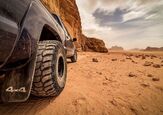
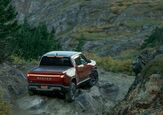
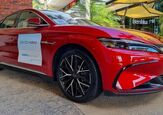




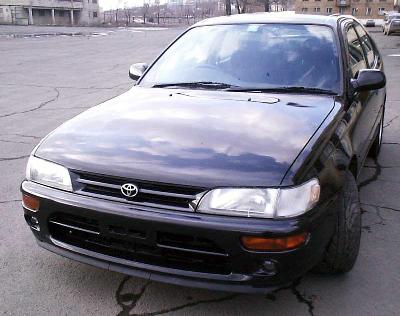






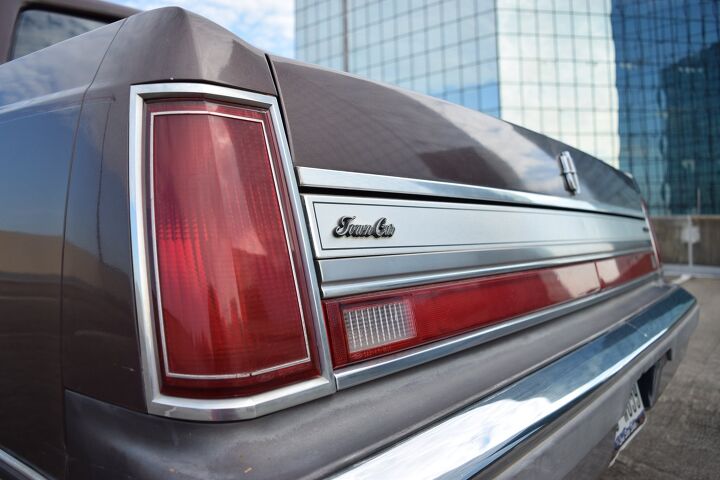
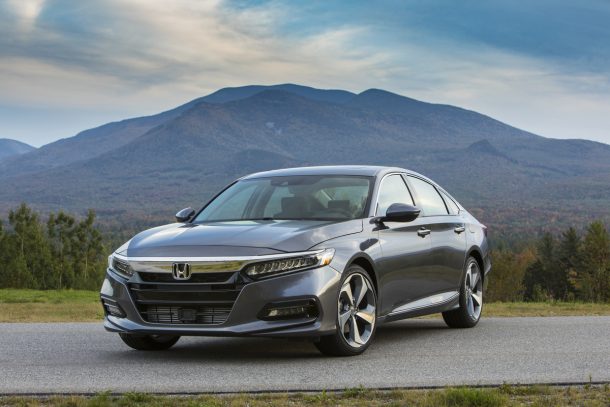
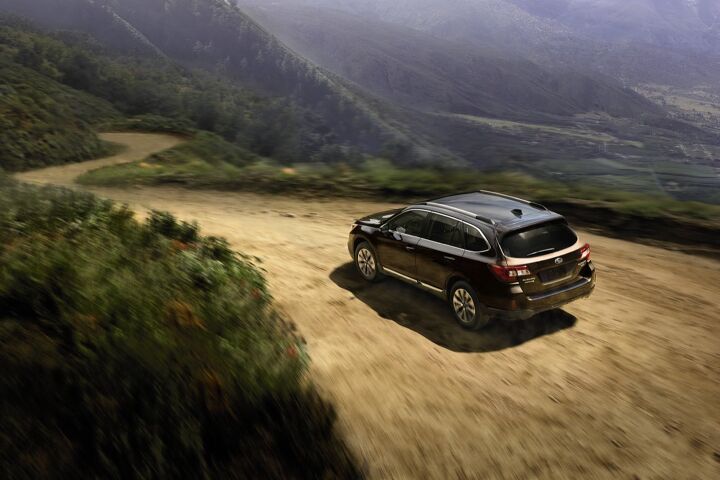

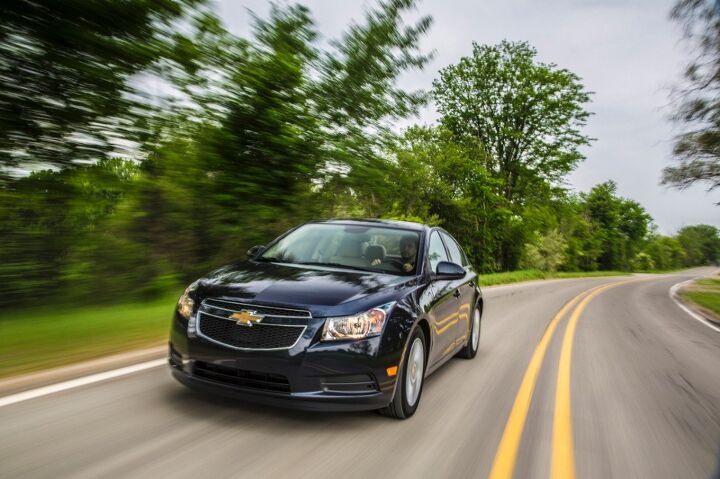



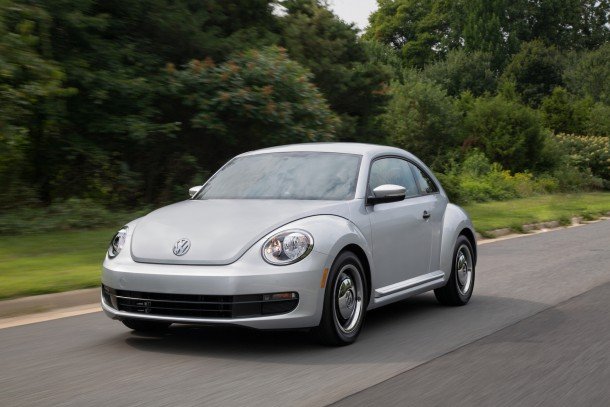



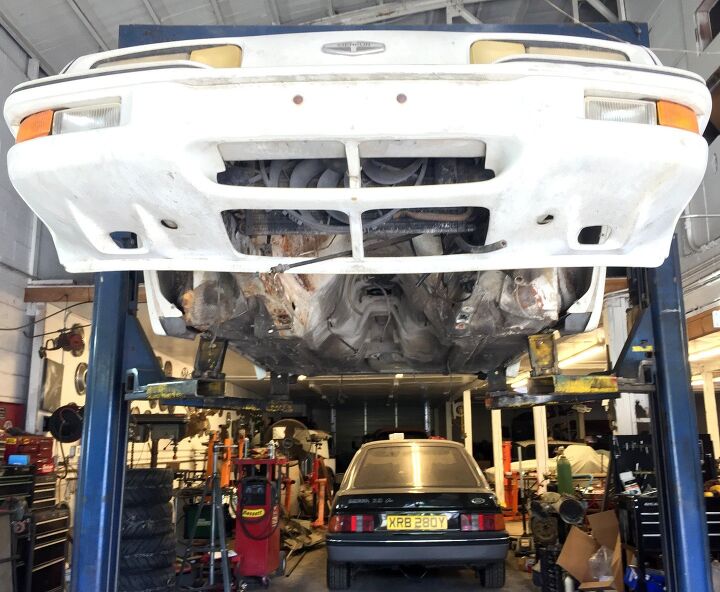




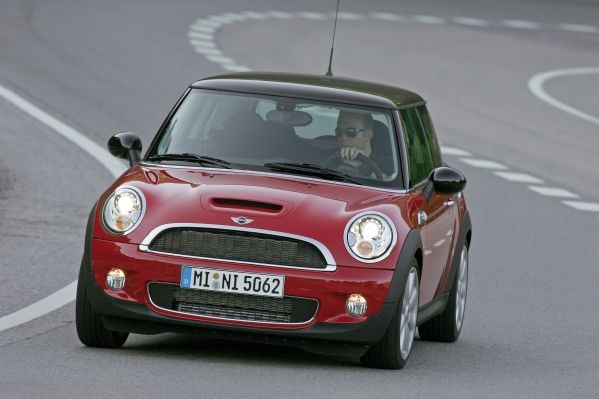





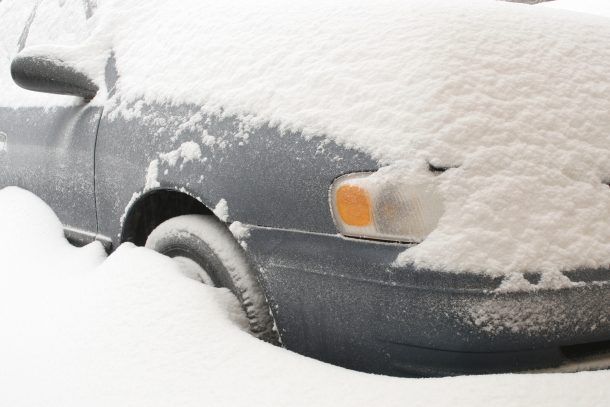


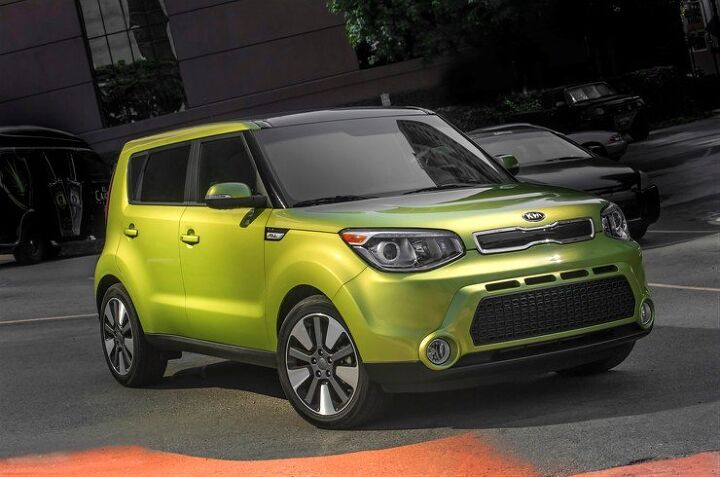

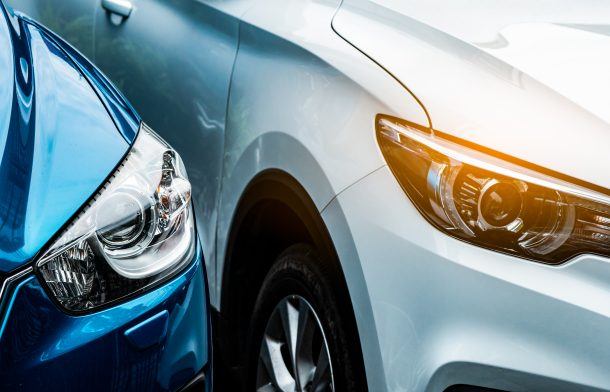





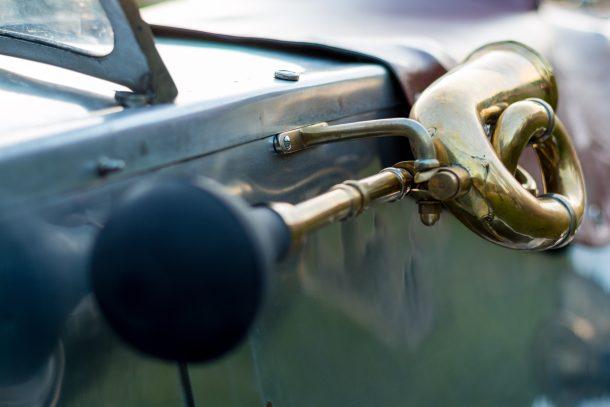
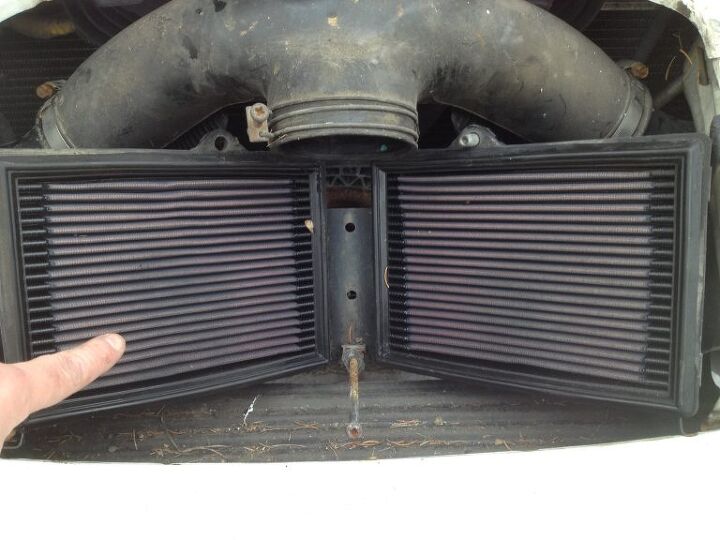
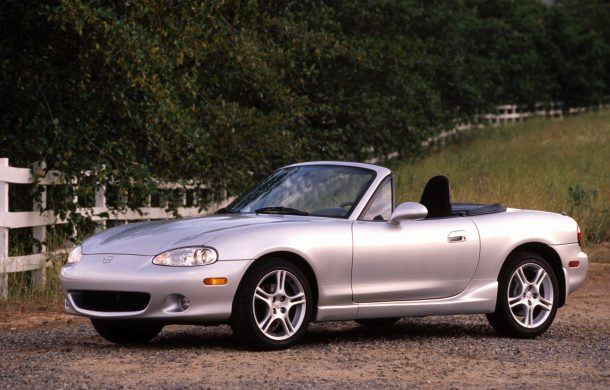


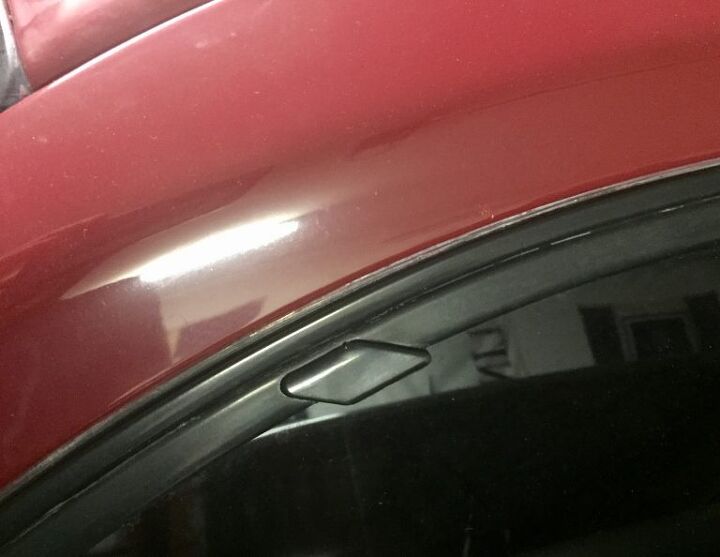




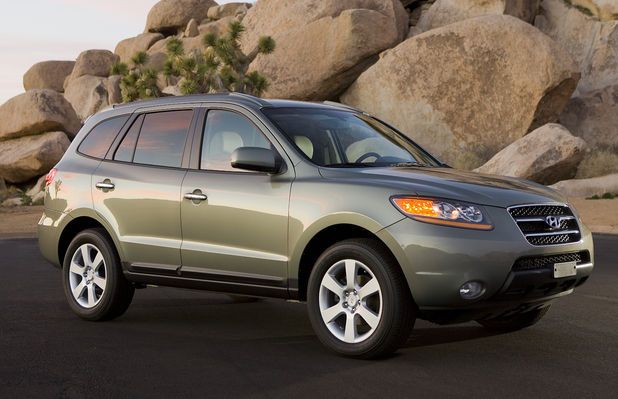

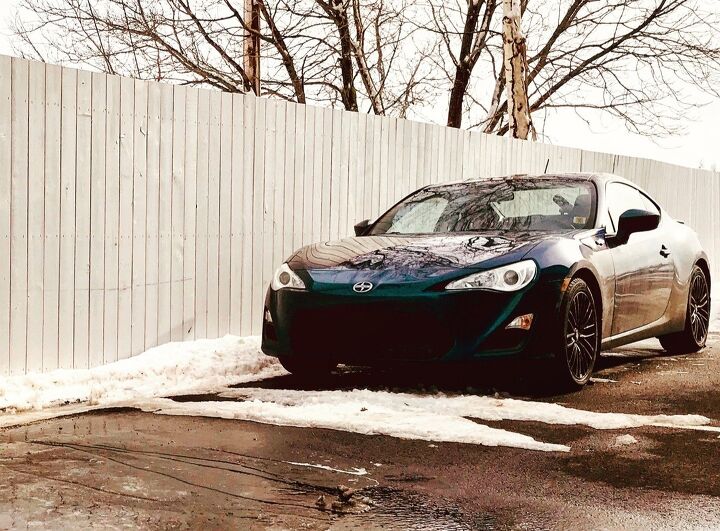
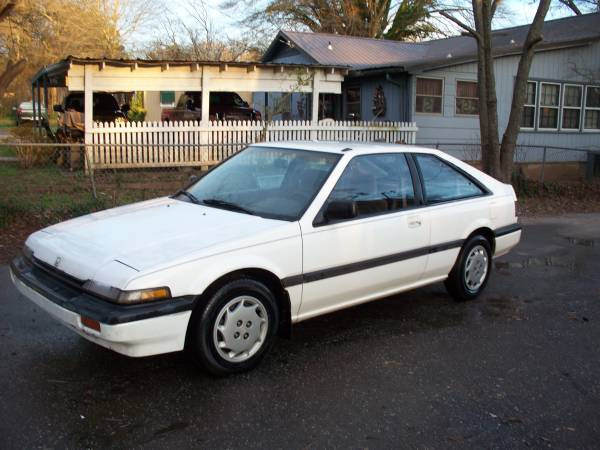







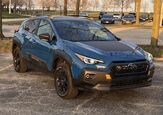





Recent Comments